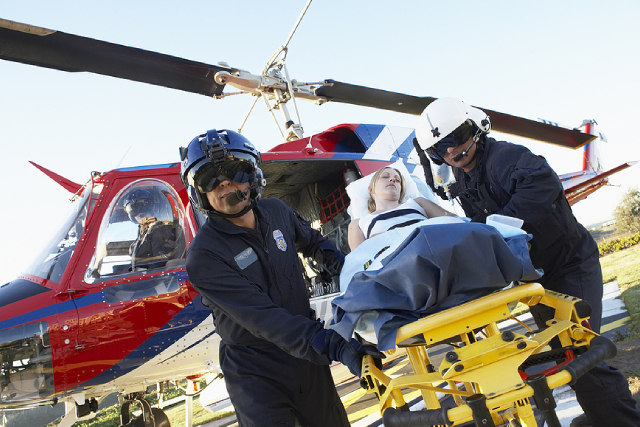
Have you ever seen an air ambulance in the sky and wondered what goes on inside? It might look like just another helicopter or plane from the outside, but inside, it’s a fully equipped, high-tech medical facility. The crew members on board play an extraordinary role in saving lives, delivering urgent care to patients in the most critical situations.
Air ambulance services are essential in emergencies where every second counts. From transporting patients across countries to providing life-saving treatment mid-flight, these professionals take on incredible responsibilities daily. Let’s take a closer look at what air ambulance crew members do and the challenges they face.
Preparing for the mission
Every day begins with preparation. The air ambulance crew, which includes pilots, paramedics, and specialised nurses or doctors, arrives ready for action. They inspect the aircraft to ensure it’s fully operational, double-checking medical equipment, fuel levels, and supplies.
Communication is vital at this stage. The team reviews the patient’s condition, the flight plan, and any potential risks. For missions involving medical evacuation in Singapore, this could mean coordinating with hospitals, doctors, and ground transportation teams. Everything must be in place to ensure a smooth and efficient transfer.
Responding to emergencies
Air ambulance crews often respond to emergencies in remote or inaccessible areas. When a call comes in, the team springs into action, gathering all the necessary details about the patient’s condition. The pilot works with air traffic control to secure the fastest route while the medical team prepares for the specific needs of the patient.
Once the patient is onboard, the crew’s primary focus is stabilising them. They monitor vital signs, administer medication, and perform critical procedures if needed. The compact nature of the aircraft means every movement and decision must be precise.
Delivering critical care mid-air
An air ambulance is a flying ICU. The medical crew is trained to handle severe injuries, illnesses, or complications during the flight. They use state-of-the-art equipment like ventilators, defibrillators, and portable labs to provide the best care possible.
For example, during a medical evacuation, the crew might need to manage a patient with severe trauma or a life-threatening condition. Their ability to adapt quickly and perform under pressure can make the difference between life and death.
The confined space of an aircraft adds another layer of complexity. Medical staff must work efficiently, often in turbulent conditions, while ensuring the patient’s comfort and safety. The weather plays a crucial role in air ambulance services, and the team must adjust accordingly to avoid complications.
Coordination and teamwork
Behind every successful air ambulance mission is seamless coordination and teamwork. Pilots navigate challenging airspaces while staying in constant communication with air traffic controllers and medical staff. The medical team, meanwhile, provides continuous care to the patient and prepares for their arrival at the destination hospital.
In some cases, these missions extend internationally. Air ambulance crews transporting patients from Singapore to other countries or vice versa must navigate complex logistics, including customs, patient documentation, and in-flight care standards.
Managing the emotional demands
Air ambulance crew members often deal with high-stress situations. From comforting anxious patients and families to making split-second decisions, their emotional resilience is just as important as their technical skills.
It’s not uncommon for crew members to form strong bonds with patients, especially during long flights. Knowing they’ve made a meaningful impact on someone’s life keeps them motivated, even on the toughest days.
A day unlike any other
No two days are the same for air ambulance crews. One day, they might be transferring a stable patient for specialised treatment, and the next, they’re responding to a critical emergency in a remote location. Their work is unpredictable, challenging, and deeply rewarding.
From pre-flight preparations to delivering critical care mid-air, every task contributes to saving lives. Their ability to remain calm under pressure, adapt to unexpected challenges, and provide top-notch medical care is what sets them apart.
That said, providing life-saving care in the sky doesn’t come cheap. Air ambulance costs vary widely depending on factors such as the distance travelled, the type of aircraft, and the level of medical care required.
For example, a domestic transfer within Singapore may cost less than an international mission that requires advanced equipment and specialised staff. While the price may seem high, it reflects the expertise, resources, and coordination involved in every mission.
For those considering air ambulance services, it’s essential to research providers thoroughly. Companies like EMA Global offer comprehensive services, ensuring patients receive the best care and support throughout the journey.
Conclusion
Air ambulance crews play an invaluable role in healthcare, offering life-saving services that go above and beyond. Whether it’s a local transfer or a medical evacuation, their dedication and expertise ensure patients receive the best care possible.
If you or your loved ones ever need air ambulance services, consider EMA Global. We offer a wide range of solutions, including medical evacuation, repatriation, and air ambulance services, ensuring you’re in safe hands every step of the way.

